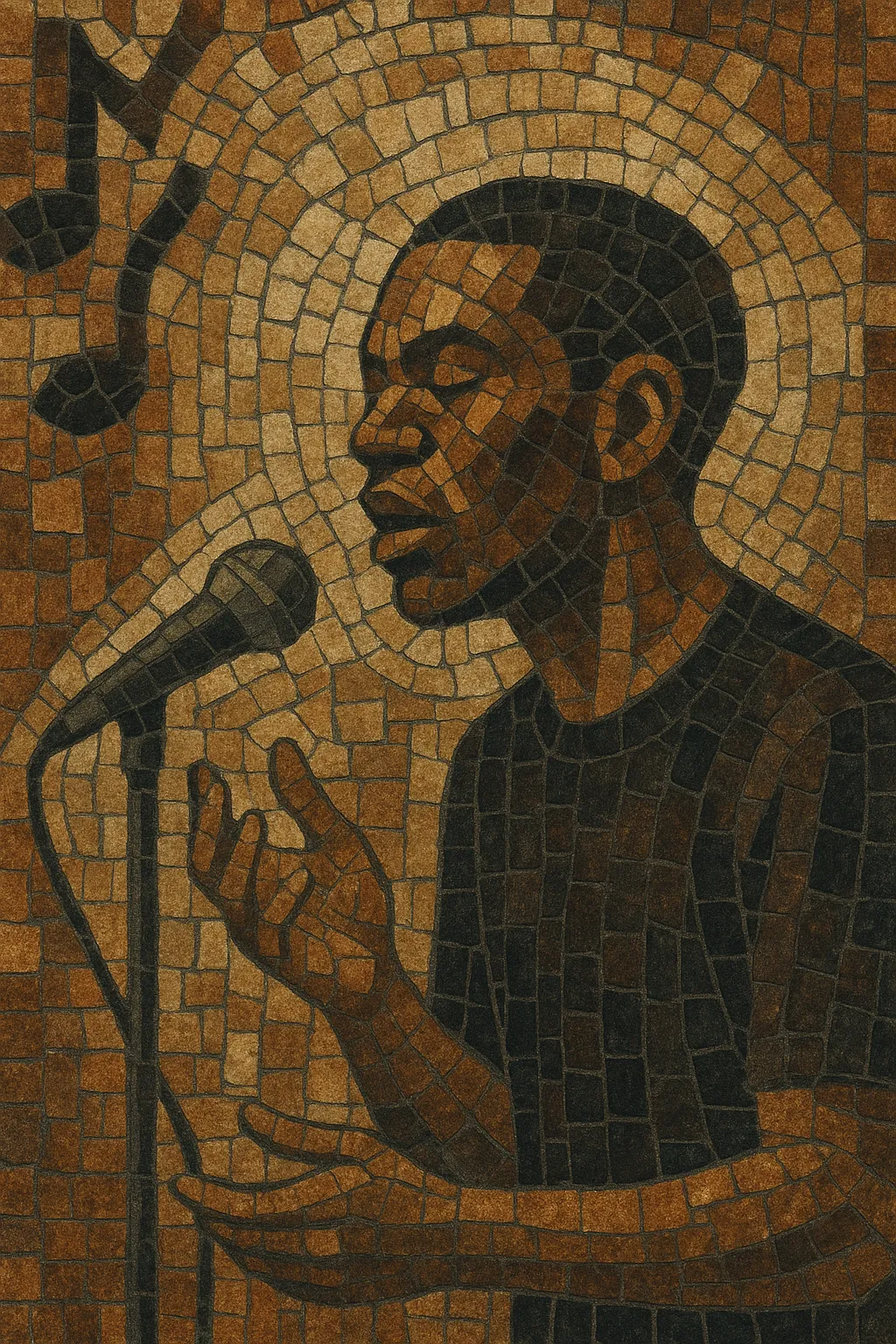
Spoken word is a performance-centered genre where text—poems, monologues, stories, or manifestos—is delivered aloud with musicality in voice rather than through singing. It may be entirely a cappella or accompanied by sparse instrumentation (often jazz combos, ambient textures, or minimal electronics) that frames the cadence and rhetoric of the performer.
The emphasis is on language: prosody, pacing, imagery, and argument. Pieces often explore personal narratives, social critique, and political themes, drawing on techniques such as internal rhyme, alliteration, and repetition. While recordings exist, the tradition is fundamentally live, prioritizing immediacy, audience engagement, and oratorical presence.
Spoken performance predates recorded music, with public recitation, storytelling, sermons, and staged monologues all forming a deep substrate. In the early 20th century, literary readings and radio/audio drama normalized speech-centered recordings, while cabaret and vaudeville proved that an audience would pay to hear words as entertainment.
Modern spoken word cohered in mid-century United States coffeehouses, where Beat poets delivered rhythmic, improvisational readings—frequently alongside small jazz ensembles. This period established many of the genre’s signatures: conversational cadence, improvisatory timing, and direct social commentary.
Artist-activists like Gil Scott-Heron and The Last Poets fused pointed political oratory with groove-based backdrops, providing a critical bridge from poetry readings to rap and hip hop aesthetics. Concurrently, labels and public radio documented poets and authors reading their own work, expanding the recorded canon of spoken word.
Poetry slam culture (popularized in Chicago and New York) formalized competitive performance, foregrounding stagecraft, precision timing, and audience rapport. Spoken word intersected with experimental music, performance art, and indie/alternative scenes, and circulated through campuses, community arts spaces, and independent venues.
Television, festivals, and streaming platforms amplified spoken word beyond local scenes (e.g., slam circuits, Def Poetry-style showcases). Contemporary practitioners blend the form with ambient, electronic, and post-rock accompaniment; others keep it stark and unaccompanied. Online video and social media have accelerated discovery, while the genre continues to inform hip hop, political music, and narrative-driven performance.

